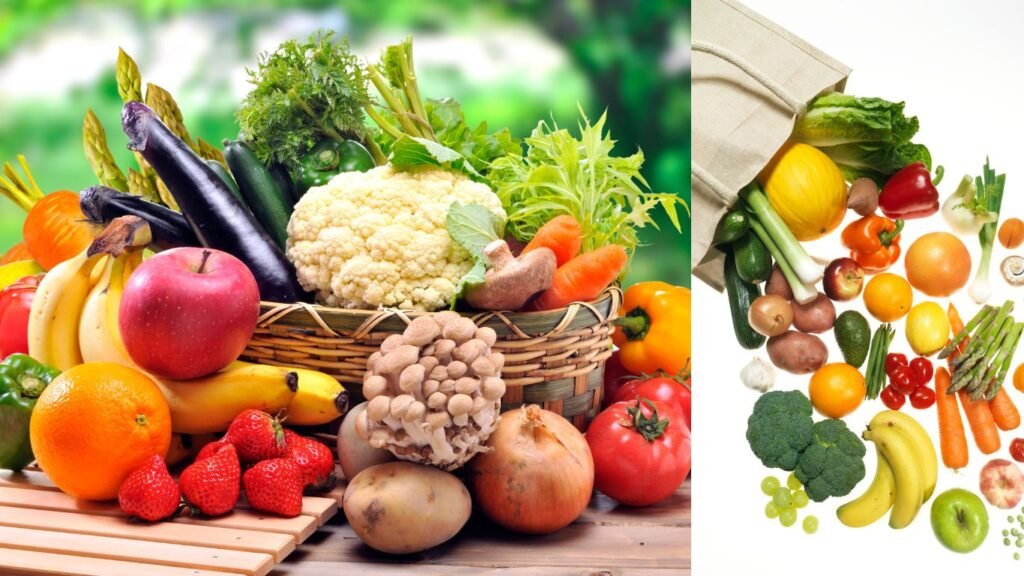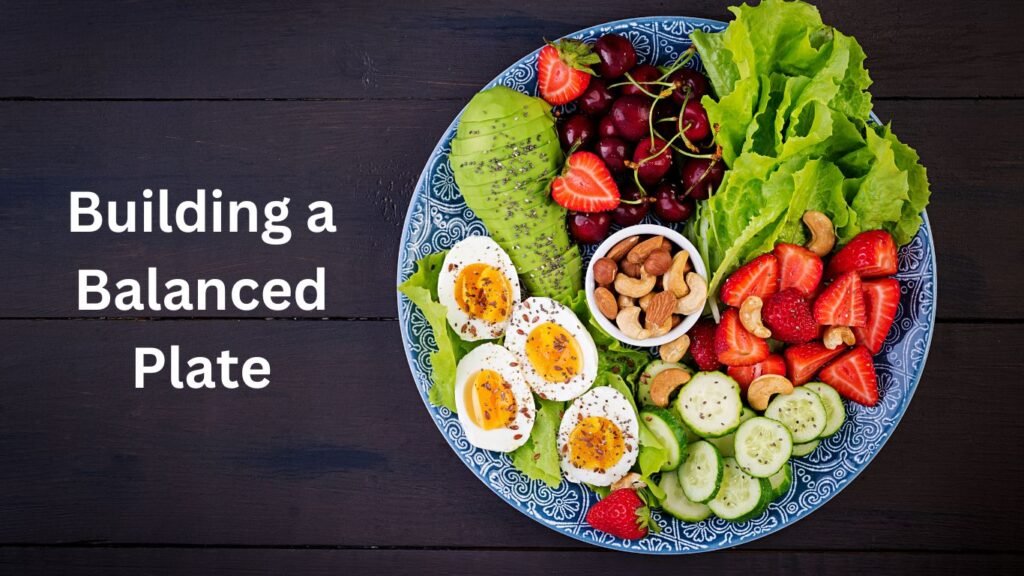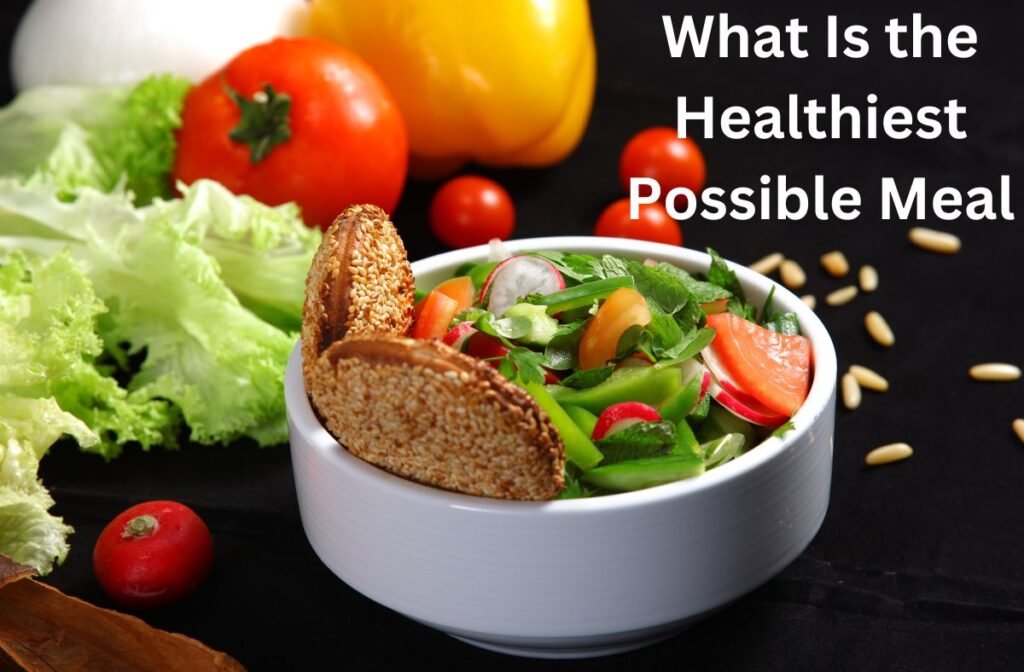In today’s fast-paced world, finding the perfect balance between taste, convenience, and nutrition can feel like searching for a unicorn. So, what is the healthiest possible meal? This question resonates with health enthusiasts and casual eaters alike, eager to nourish their bodies with the best possible fuel. Let’s dive into the components that make up the healthiest meal, explore delicious and nutritious recipes, and uncover tips to help you create meals that not only satisfy your taste buds but also boost your overall well-being.
The Foundations of a Healthiest Possible Meal
When pondering what is the healthiest possible meal, it’s essential to focus on balance and variety. A truly healthy meal incorporates a harmonious blend of macronutrients and micronutrients, ensuring your body receives the necessary fuel to thrive.
1. Lean Proteins
Proteins are the building blocks of our bodies, crucial for muscle repair, immune function, and the production of enzymes and hormones. Including lean proteins in your meal ensures you stay full longer and supports overall health.
Sources of Lean Proteins:
- Poultry: Chicken breast, turkey
- Fish and Seafood: Salmon, tuna, shrimp
- Plant-Based Proteins: Lentils, chickpeas, tofu, tempeh
- Eggs: A versatile and nutrient-dense option
2. Whole Grains
Whole grains provide sustained energy and are rich in fiber, aiding digestion and helping maintain a healthy weight. Unlike refined grains, they retain their bran and germ, offering more nutrients.
Examples of Whole Grains:
- Brown Rice
- Quinoa
- Oats
- Whole Wheat Bread and Pasta
- Barley

3. Fruits and Vegetables
Fruits and vegetables are packed with essential vitamins, minerals, antioxidants, and fiber. They support immune function, reduce the risk of chronic diseases, and promote overall health.
Colorful Choices:
- Leafy Greens: Spinach, kale, Swiss chard
- Cruciferous Vegetables: Broccoli, cauliflower, Brussels sprouts
- Berries: Blueberries, strawberries, raspberries
- Citrus Fruits: Oranges, grapefruits, lemons
- Root Vegetables: Carrots, sweet potatoes, beets
4. Healthy Fats
Contrary to popular belief, not all fats are bad. Healthy fats are crucial for brain health, hormone production, and the absorption of fat-soluble vitamins (A, D, E, K).
Good Sources of Healthy Fats:
- Avocados
- Nuts and Seeds: Almonds, chia seeds, flaxseeds
- Olive Oil and Other Plant Oils
- Fatty Fish: Salmon, mackerel, sardines
5. Hydration
Staying hydrated is often overlooked but is vital for maintaining bodily functions, regulating temperature, and supporting digestion. Water is the best choice, but herbal teas and infused waters are excellent alternatives.
Balancing Macronutrients for Optimal Health
A healthy meal isn’t just about including the right types of food but also about balancing macronutrients to meet your body’s needs.
Carbohydrates: Fuel for Your Body
Carbohydrates are your body’s primary source of energy. Opt for complex carbohydrates, which provide a steady release of energy, rather than simple sugars that can cause energy spikes and crashes.
Complex Carbohydrates Include:
- Whole Grains: Brown rice, quinoa
- Legumes: Beans, lentils
- Vegetables: Sweet potatoes, squash
Proteins: Building and Repairing
Proteins are essential for muscle repair, enzyme function, and immune health. Aim to include a source of lean protein in every meal to support these functions.
Fats: Essential for Function
Healthy fats support brain function, hormone production, and cell structure. Including sources of unsaturated fats in your meals can help improve cholesterol levels and reduce inflammation.
Micronutrients: The Hidden Heroes
While macronutrients provide energy and support bodily functions, micronutrients—vitamins and minerals—are crucial for maintaining overall health. They play roles in immune function, bone health, fluid balance, and more.
Key Vitamins and Minerals:
- Vitamin C: Boosts immune system and aids in collagen production (found in citrus fruits, strawberries, bell peppers)
- Vitamin D: Supports bone health and immune function (sourced from sunlight, fortified foods, fatty fish)
- Calcium: Essential for strong bones and teeth (dairy products, leafy greens, fortified plant milks)
- Iron: Crucial for blood health and energy (red meat, beans, spinach)
- Fiber: Aids in digestion and helps maintain a healthy weight (whole grains, fruits, vegetables)
- Magnesium: Supports muscle and nerve function (nuts, seeds, whole grains)
Portion Control: Eating the Right Amount
Understanding portion sizes is as important as choosing the right foods. Overeating, even healthy foods, can lead to weight gain and other health issues.
Tips for Portion Control:
- Use Smaller Plates: Helps prevent overeating by making portions appear larger.
- Listen to Your Hunger Cues: Eat when you’re hungry and stop when you’re satisfied.
- Pre-Portion Snacks: Instead of eating directly from the package, portion out snacks to avoid mindless eating.
- Measure Servings: Use measuring cups or a kitchen scale to get a better sense of portion sizes.

Meal Composition: Building a Balanced Plate
Creating a balanced plate ensures you’re getting a variety of nutrients in each meal. Here’s a simple guide to constructing a healthy meal:
The Plate Method:
| Component | Portion | Examples |
|---|---|---|
| Half the Plate | Fruits and Vegetables | Spinach salad, steamed broccoli, berries |
| One Quarter | Lean Protein | Grilled chicken, tofu stir-fry, salmon |
| One Quarter | Whole Grains or Starchy Vegetables | Brown rice, quinoa, sweet potatoes |
| Healthy Fats | Small serving of healthy fats | Avocado slices, a drizzle of olive oil |
| Hydration | Adequate fluids (water, herbal tea) | A glass of water with lemon, green tea |
Crafting the Healthiest Possible Meal: A Recipe Guide
To illustrate what is the healthiest possible meal, here are two balanced and delicious recipes that incorporate all essential nutrients.
Mediterranean Power Bowl
Ingredients:
| Ingredient | Quantity |
|---|---|
| Quinoa | 1 cup, cooked |
| Grilled Chicken | 2 breasts, sliced |
| Cherry Tomatoes | 1 cup, halved |
| Cucumber | 1, diced |
| Kalamata Olives | 1/4 cup, sliced |
| Feta Cheese | 1/4 cup, crumbled |
| Olive Oil | 2 tablespoons |
| Lemon Juice | Juice of 1 lemon |
| Fresh Parsley | 2 tablespoons, chopped |
| Salt and Pepper | To taste |
Instructions:
- Cook Quinoa: Rinse quinoa under cold water. Cook according to package instructions and let it cool.
- Grill Chicken: Season chicken breasts with salt and pepper. Grill until fully cooked and slice.
- Prepare Vegetables: In a large bowl, combine cherry tomatoes, cucumber, olives, and parsley.
- Mix Dressing: In a small bowl, whisk together olive oil, lemon juice, salt, and pepper.
- Assemble Bowl: Add quinoa and grilled chicken to the vegetables. Drizzle with dressing and toss gently.
- Garnish: Sprinkle feta cheese on top before serving.
Veggie-Packed Stir-Fry
Ingredients:
| Ingredient | Quantity |
|---|---|
| Firm Tofu | 1 block, cubed |
| Broccoli Florets | 2 cups |
| Bell Pepper | 1, sliced |
| Carrot | 1, julienned |
| Snap Peas | 1 cup |
| Garlic | 2 cloves, minced |
| Ginger | 1 tablespoon, grated |
| Soy Sauce | 3 tablespoons |
| Olive Oil | 2 tablespoons |
| Brown Rice | 2 cups, cooked |
| Sesame Seeds | 1 teaspoon |
| Green Onions | 2, sliced |
Instructions:
- Prepare Brown Rice: Cook brown rice according to package instructions.
- Cook Tofu: In a skillet, heat olive oil over medium heat. Add tofu cubes and cook until golden brown. Remove and set aside.
- Stir-Fry Vegetables: In the same skillet, add garlic and ginger, sauté until fragrant. Add broccoli, bell pepper, carrot, and snap peas. Stir-fry until tender-crisp.
- Combine Ingredients: Return tofu to the skillet. Add soy sauce and toss to coat evenly. Cook for another 2 minutes.
- Serve: Serve stir-fry over brown rice, garnished with sesame seeds and green onions.
Table: Essential Nutrients in the Healthiest Possible Meal
| Nutrient | Importance | Sources |
|---|---|---|
| Protein | Muscle repair, immune function | Chicken, tofu, lentils |
| Fiber | Digestive health, satiety | Whole grains, vegetables, fruits |
| Healthy Fats | Brain health, hormone production | Avocado, nuts, olive oil |
| Vitamins | Various functions including immune support | Fruits, vegetables, fortified foods |
| Minerals | Bone health, fluid balance | Dairy products, leafy greens, nuts |
| Antioxidants | Reduce oxidative stress, fight inflammation | Berries, dark leafy greens, nuts |
Tips for Creating the Healthiest Possible Meal
Crafting the healthiest possible meal involves more than just selecting the right ingredients. Here are some actionable tips to elevate your meal planning and preparation:
1. Prioritize Whole Foods
Focus on whole, unprocessed foods to maximize nutrient intake and minimize harmful additives. Fresh fruits, vegetables, lean proteins, and whole grains should form the foundation of your meals.
2. Incorporate Variety
Eating a wide range of foods ensures you receive a broad spectrum of nutrients. Experiment with different vegetables, proteins, and grains to keep meals exciting and nutritionally balanced.
3. Use Healthy Cooking Methods
Opt for baking, grilling, steaming, or sautéing instead of frying to retain the nutritional value of your ingredients and reduce unhealthy fat intake.
4. Stay Hydrated
Include hydrating foods like cucumbers, watermelon, and oranges in your meals, and ensure you drink plenty of water throughout the day to support overall health.
5. Listen to Your Body
Pay attention to hunger and fullness cues to prevent overeating and ensure your meals are satisfying without being excessive.
6. Plan Ahead
Take time each week to plan your meals and create a grocery list. This helps you stay organized, save time, and make healthier food choices.
Overcoming Common Challenges in Creating the Healthiest Possible Meal
Even with the best intentions, creating the healthiest possible meal can come with its own set of challenges. Here’s how to navigate some common obstacles:
1. Time Constraints
Solution: Utilize meal prepping and batch cooking. Prepare large portions of grains, proteins, and vegetables in advance to save time during the week.
2. Budget Limitations
Solution: Focus on affordable, nutrient-dense staples like beans, lentils, and seasonal produce. Buying in bulk and taking advantage of sales can also help reduce costs.
3. Limited Cooking Skills
Solution: Start with simple recipes and gradually build your cooking skills. Online tutorials, cooking classes, and beginner-friendly cookbooks can be invaluable resources.
4. Picky Eating
Solution: Incorporate a variety of flavors and textures to make meals more appealing. Experiment with herbs, spices, and different cooking methods to enhance taste without adding unhealthy ingredients.
5. Staying Motivated
Solution: Set clear, achievable goals and track your progress. Engage with friends, family, or online communities that support healthy eating to stay motivated and accountable.
Frequently Asked Questions (FAQs)
1. What defines the healthiest possible meal?
A healthy meal is balanced, incorporating lean proteins, whole grains, a variety of fruits and vegetables, healthy fats, and adequate hydration. It should provide essential nutrients without excessive calories, sugars, or unhealthy fats.
2. Can I make the healthiest possible meal on a budget?
Absolutely! Focus on affordable, nutrient-dense foods like beans, lentils, whole grains, and seasonal produce. Planning and cooking at home can also help keep costs down while ensuring you eat healthily.
3. How often should I eat the healthiest possible meal?
Ideally, aim to incorporate healthy, balanced meals into your daily routine. Consistency is key to maintaining optimal health and reaping the long-term benefits of a nutritious diet.
4. Is it necessary to count calories for the healthiest possible meal?
Counting calories isn’t necessary for everyone. Focus on portion sizes and the nutritional quality of your food instead. Being mindful of what you eat can help you maintain a balanced diet without the stress of tracking every calorie.
5. What are some quick and easy healthy meal ideas?
Quick and easy healthy meal ideas include salads with a variety of vegetables and lean proteins, stir-fries with tofu or chicken and mixed veggies, and grain bowls with quinoa, roasted vegetables, and a healthy dressing.
6. Can the healthiest possible meal help with weight loss?
Yes, a balanced and nutrient-dense meal can aid in weight loss by providing essential nutrients while keeping calorie intake in check. It helps regulate appetite and metabolism, making it easier to maintain a healthy weight.
7. How do I ensure I’m getting enough vitamins and minerals in the healthiest possible meal?
Include a variety of colorful fruits and vegetables, lean proteins, whole grains, and healthy fats in your meals. This diversity ensures you receive a broad spectrum of essential vitamins and minerals.
8. What role do healthy fats play in the healthiest possible meal?
Healthy fats support brain function, hormone production, and the absorption of fat-soluble vitamins. They also help keep you full and satisfied, preventing overeating.
9. Is it okay to have processed foods in the healthiest possible meal?
While whole foods should be the focus, small amounts of minimally processed foods can be included. Choose high-quality processed foods like whole-grain bread or natural nut butters over highly processed snacks.
10. How can I make the healthiest possible meal more flavorful?
Enhance flavor with herbs, spices, lemon juice, and healthy sauces like tahini or vinaigrettes. Experimenting with different seasonings and cooking methods can make healthy meals more enjoyable.
Conclusion
So, what is the healthiest possible meal? It’s a meal that is balanced, nutrient-dense, and varied, incorporating lean proteins, whole grains, a colorful array of fruits and vegetables, healthy fats, and adequate hydration. Creating such meals doesn’t have to be complicated or time-consuming. With thoughtful planning, simple recipes, and a focus on whole foods, you can enjoy delicious and nourishing meals that support your health and well-being.
Remember, the journey to optimal nutrition is personal and unique. Listen to your body, experiment with different foods and flavors, and find what works best for you. Embrace the process of making healthy choices that not only fuel your body but also bring joy to your palate. Here’s to your health—one balanced, vibrant meal at a time!


